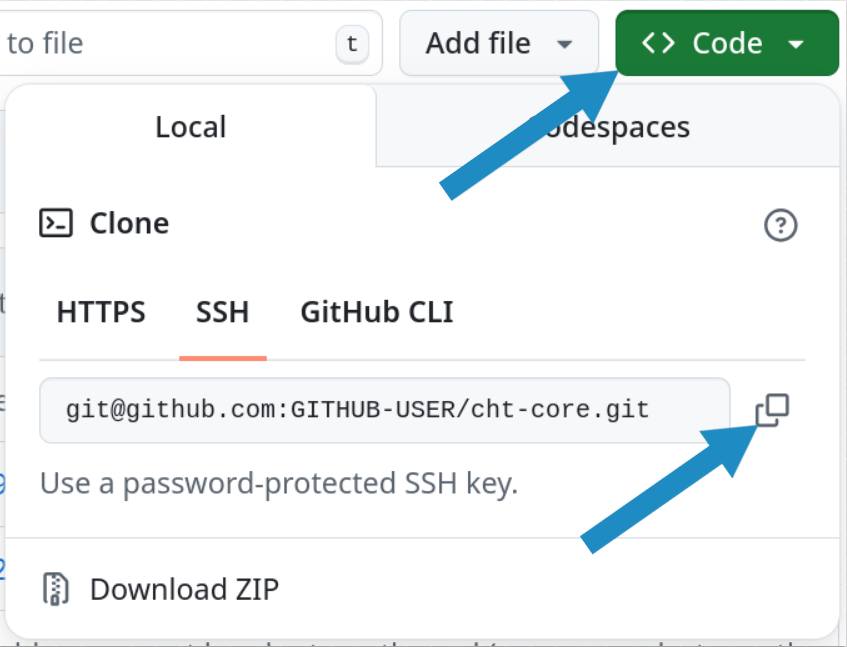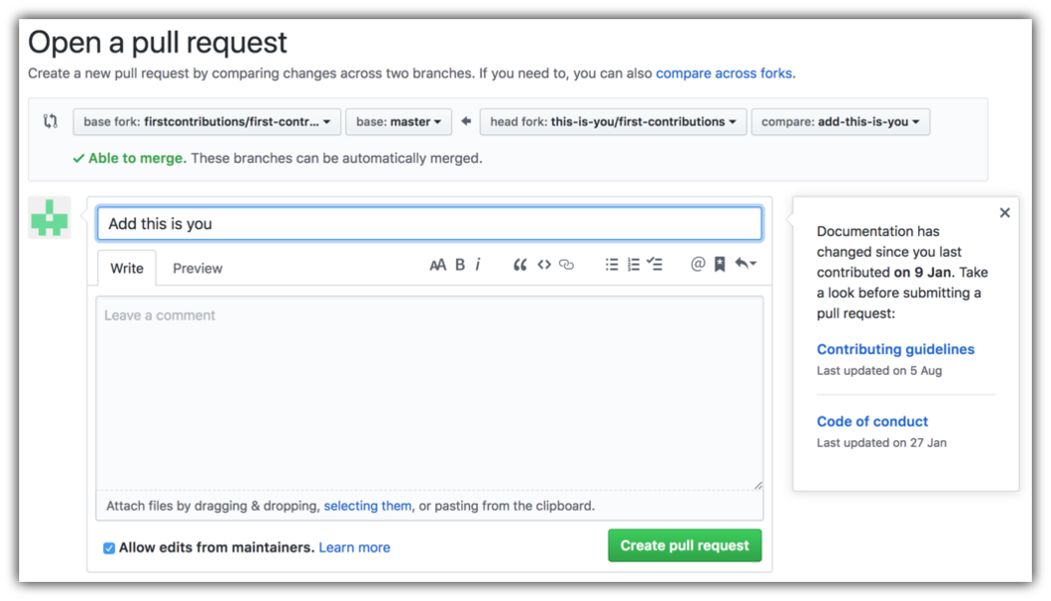First Time Contributors Guide
Starting guide for first time contributors
Who this is for
Documentation exists for everything from how to compile the CHT from source to how to build the docs site locally. However, where do you start? What if you’ve never contributed to an open source project before? This guide helps the newcomer make their first contribution.
If you want the more brief steps, check out the contributors’ quick start.
If this isn’t you all together, head over to our Community section where it list out other actions for new community members who are not developers.
What is the CHT
Before you write a line of code or help improve the documentation, it’s important to understand the larger picture of the CHT. Read up on why you might use the CHT and visit the CHT home page. If you’ve never seen or used the CHT, it can be really helpful to sign up for a demo.
Diving more into the technical aspects of what the CHT is, see the technologies and tools used by the CHT. Additionally, the Technology Radar for CHT Contributors gives an overview of the technologies used to build the CHT tools.
The CHT is open source. Any code you commit will be freely available for other CHT users and they can improve and customize it just as you might choose to do so with the code others have written.
How code gets written
Over the years the process for writing the CHT has been codified in the development workflow. Skim this so you’re aware of the basics. Check out the CHT code style guide as well. You don’t have to memorize everything here, but it’s important to know about and refer back to when the time comes to actually write code.
A good rule of thumb is to mimic the processes you see and the styles already present in the source code.
If you have never used git or GitHub, check out the Get started using GitHub in less than an hour guide. This will help you set up a GitHub account, which you’ll also need. If you haven’t worked on a pull request before, check out How to Contribute to an Open Source Project and How to Contribute to Open Source.
Your first issue
Issues marked Good first issue could be a great start if you are new to the CHT. Feel free to pick an issue that looks easy for you! An easy-looking issue will better set you up for successfully merging the code. Easy merges are our goal here!
Make a comment on the issue asking for the issue to be assigned to you.
Note - Help Wanted issues do not have the extra introduction that Good first issues have. While you’re welcome to work on them, they’ll be more of a challenge for first-time contributors that likely will want some guidance found in the Good first issues.
Fork the CHT
Good work! if you’ve gotten this far you understand what the CHT is and you know how code is written for the CHT. Now it’s time to set up your very own copy of the CHT, called a fork.
Follow these steps to set up a copy of the code (“fork”) which you have on your computer (“git clone”). If you’re not comfortable with the command line, see tutorials using GUI tools.
If you do not have a GitHub account, create one now as it’s a requirement to fork and contribute code.
Create a Fork
Create your own fork the CHT Core repository by going to the CHT’s fork page on GitHub. When you click “Create Fork” on that page, you will create a copy of this repository in your GitHub account.

Clone the repository
To clone the forked repository locally, in a browser, open the forked repository. Then click on the “<> Code” button and then on the “SSH” tab. Finally, click the double square icon to copy the URL to your clipboard.
Open a terminal and run this command, being sure to replace GITHUB-USER with your GitHub user:
git clone https://github.com/GITHUB-USER/cht-core.gitCreate a branch
Change to the repository directory on your computer (if you are not already there):
cd cht-coreNow create a branch using the git switch command:
git switch -c TICKET-NUMBER-your-new-branch-nameFor example:
git switch -c 1234-add-alonzo-churchIf you get any errors using git switch, click here:
If the error message “Git: switch is not a git command. See git –help” appears, it’s likely because you’re using an older version of git.
In this case, try to use git checkout instead:
git checkout -b your-new-branch-nameDevelopment environment
Now that you have an idea of what the CHT is and how code gets written, go set up your development environment. Move intentionally, being sure to follow each step carefully. If you get stuck here - or anywhere - reach out on the forum!
Spend some time understanding how to start up and stop the development environment.
Make necessary changes and commit those changes
Following the suggestions on the Good First Issue, make the changes to the code. Be sure the app still works and compiles with out errors.

If you go to the project directory and execute the command git status, you’ll see there are changes. In this example, the Contributors.md file has been modified
Add any changes to the branch you just created using the git add command. In this example we’re adding just one file, but you add multiple separated by spaces:
git add Contributors.mdNow commit those changes using the git commit command. On your first commit, be sure reference the original ticket as shown with the #1234 at the end:
git commit -m "Updating Contributors list per #1234"Push changes to GitHub
Push your changes using the command git push:
git push -u origin your-branch-namereplacing your-branch-name with the name of the branch you created earlier.
If you get a Authentication failed error while pushing, click here:
remote: Support for password authentication was removed on August 13, 2021. Use a personal access token instead. remote: See https://github.blog/2020-12-15-token-authentication-requirements-for-git-operations/ for more information. fatal: Authentication failed for 'https://github.com//first-contributions.git/'
Go to GitHub’s tutorial on generating and configuring an SSH key to your account.
Also, you might want to run ‘git remote -v’ to check your remote address.
If it looks anything like this:
origin https://github.com/your-username/your_repo.git (fetch) origin https://github.com/your-username/your_repo.git (push)
change it using this command:
git remote set-url origin git@github.com:your-username/your_repo.gitOtherwise you’ll still get prompted for username and password and get authentication error.
Submit your changes for review
If you go to your repository on GitHub, you’ll see a Compare & pull request button. Click on that button.

Now submit the pull request.

You will get a notification email once the changes have been merged or when changes are requested. Maintainers are usually working on several initiatives at once, so expect that it might take some time before they can look at your PR.
Content from this section is taken from the first-contributions which is under the MIT License.
Tutorials Using Other Tools
Did this documentation help you ?